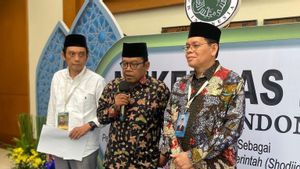YOGYAKARTA The way survey institutions work need to be known for those of you who like to follow political news, so as not to be deceived by fake surveys.
As is known, recently, a number of survey institutions such as Charta Politica, Saeful Mujadi Research Center (SMRC), Indetat, LSI Deni JA and so on, released the results of a survey on the electability of presidential candidates. Given, in 2024, Indonesia will hold a simultaneous general study (Pemilu). So, how do survey institutions work?
Survey institutions are institutions that conduct public opinion research related to political contestation, such as elections, both national and regional and public policy making, as compiled by VOI from various sources.
The survey institute can also be interpreted as a research agency with a method carried out by collecting opinions from representative samples from the target population.
Well, polls on public interest in presidential candidates or prospective regional heads of dreams carried out by survey institutions are very helpful in the selection process.
Survey institutes conducting polls before the election process play an important role for political parties and those with interests.
In Indonesia, there are dozens of survey institutions that are actively carrying out polls on the electability of presidential candidates, the level of popularity of political parties, the electability of regional head candidates, and various other matters related to elections.
The way survey institutions work is as follows:
When conducting polls, survey institutions usually already determine the number of respondents or samples that are considered to represent the population.
If the samples taken by the officers are very large, it can be ascertained that the data validity will be higher, and the level of error will be smaller.
However, before having a sample, the survey agency needs to determine the target population first.
In one election, the sampling methods that are often used are stratified systematic random sampling and multistage random sampling.
Strateified systematic random sampling is a sampling method involving the division of populations into smaller sub-groups known as strata.
Strata is formed according to attributes or characteristics with members such as income or educational achievement.
Meanwhile, multistage random sampling is a sampling method where each member of the population will get the same opportunity to be selected as a sample.
The multistage random sampling method is carried out in a graded and proportional manner based on the size of the population.
Through this method, survey institutions can get proportional samples and in accordance with the percentage of the number of people.
Here are some of the terms that often appear in the release of survey results:
That's the information about how survey institutions work. Hopefully it will be useful!
The English, Chinese, Japanese, Arabic, and French versions are automatically generated by the AI. So there may still be inaccuracies in translating, please always see Indonesian as our main language. (system supported by DigitalSiber.id)













